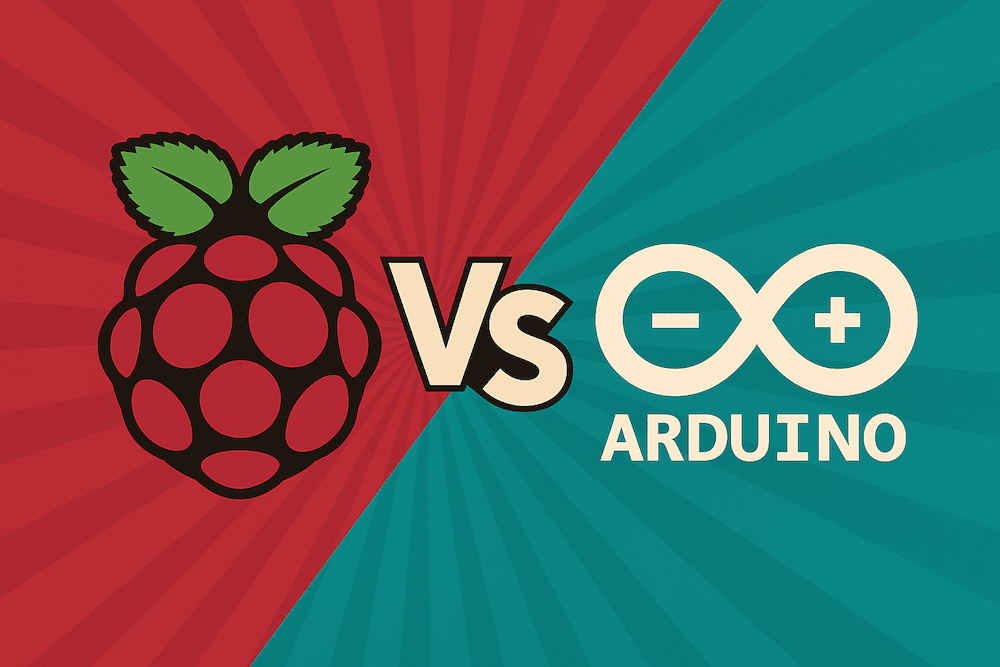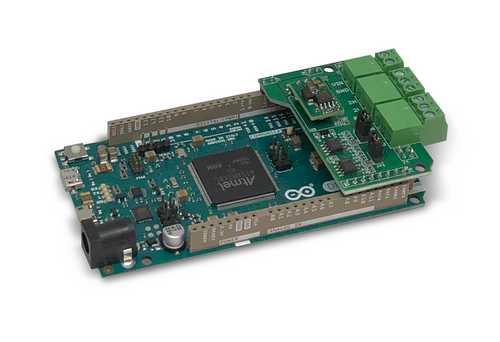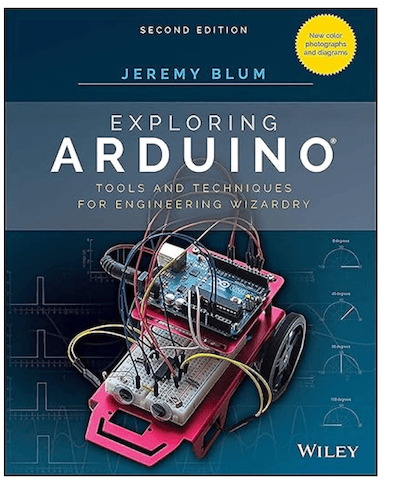Recent Posts
CAN Bus Development with Raspberry Pi vs Arduino Due Using Copperhill Technologies Hardware
Posted by on
 CAN Bus (Controller Area Network) is an essential protocol in automotive, industrial, and embedded systems. Its robustness, real-time capabilities, and multi-master structure make it the go-to solution for everything from vehicle diagnostics to robotic motion control.
CAN Bus (Controller Area Network) is an essential protocol in automotive, industrial, and embedded systems. Its robustness, real-time capabilities, and multi-master structure make it the go-to solution for everything from vehicle diagnostics to robotic motion control.
Two popular platforms for CAN Bus development are the Raspberry Pi and the Arduino Due. Copperhill Technologies supports both platforms with professional-grade hardware:
-
✅ PiCAN3 CAN Bus HAT for Raspberry Pi 4
-
✅ Dual CAN Bus Interface for Arduino Due
This post explores the technical differences, advantages, and trade-offs between these two platforms, guiding hobbyists, students, and engineers toward the best fit for their CAN-based projects.
Hardware Architecture
 Raspberry Pi + PiCAN3
Raspberry Pi + PiCAN3
The PiCAN3 board is a hardware add-on (HAT) that mounts directly on top of the Raspberry Pi 4. It provides a single high-speed CAN Bus channel using the MCP2515 CAN controller and MCP2551 transceiver, interfacing via SPI.
Key Features:
-
Powered by 5V through Pi header or DB9
-
Optional onboard GPS module and RTC (ideal for time-stamped logging)
-
SocketCAN-compatible
-
Comes with screw terminals, DB9 connector, and power jumper settings
-
Easily integrates with WiFi, Bluetooth, and internet/cloud platforms via Raspberry Pi
Use Case: Build a portable CAN-to-cloud logger, remote fleet diagnostics tool, or an educational CAN Bus simulator.
 Arduino Due + Dual CAN Bus Interface
Arduino Due + Dual CAN Bus Interface
The Arduino Due is powered by an Atmel SAM3X8E Cortex-M3, a 32-bit microcontroller that includes two native CAN controllers. Copperhill Technologies’ Dual CAN Interface board enables access to both channels via onboard transceivers (SN65HVD230 or equivalent).
Key Features:
-
Two independent CAN channels (CAN0 and CAN1)
-
High-speed CAN up to 1 Mbps
-
Optional prototyping area on the shield
-
No external CAN controller needed (unlike PiCAN3)
-
Works with FlexCAN, CANopen, or custom protocols
Use Case: Develop a real-time embedded controller, automotive ECU prototype, or CAN-to-CAN gateway.
Operating System vs No OS
Raspberry Pi: Linux-Based (Raspberry Pi OS)
-
Full Linux OS with multitasking, networking, file system
-
Built-in SocketCAN stack: the de facto standard for CAN on Linux
-
You can run multiple applications simultaneously (e.g., CAN logger + Python dashboard + MQTT client)
-
Common tools:
candump,cansend,can-utils, Wireshark with CAN plugin
Arduino Due: Bare-Metal Microcontroller
-
No OS — code runs directly on the CPU with no abstraction layers
-
Deterministic response times (ideal for hard real-time tasks)
-
Full control of CAN bus timing, filtering, interrupts
-
All code written in C/C++ using Arduino IDE or Atmel Studio
-
You must manage memory and timing manually
⚙️ Software Development Stack
| Feature | Raspberry Pi | Arduino Due |
|---|---|---|
| OS | Raspberry Pi OS (Linux) | Bare-metal (no OS) |
| CAN Library | SocketCAN | Custom libraries (e.g., CANLib, FlexCAN, CANopen) |
| Programming Language | Python, C, C++, Bash | C, C++ |
| Toolchain | Linux terminal, VS Code, Thonny, ssh | Arduino IDE, PlatformIO, Atmel Studio |
| Debugging | Logs, htop, candump, Wireshark | Serial monitor, hardware breakpoints |
⚡ Performance and Real-Time Behavior
| Metric | Raspberry Pi | Arduino Due |
|---|---|---|
| CAN Latency | Moderate (OS introduces delays) | Very Low (microsecond-level control) |
| Interrupt Precision | Milliseconds | Microseconds |
| CPU Load Sensitivity | Medium (multitasking system) | Minimal (single-task, direct execution) |
| Reliability for Real-Time Control | Limited | Excellent |
| Ideal for Protocol Stacks (e.g., CANopen) | Yes, for analysis or master-only roles | Yes, for real-time node simulation |
Use Cases by Application Type
| Application | Recommended Platform |
|---|---|
| Vehicle Data Logging | Raspberry Pi + PiCAN3 |
| Real-Time CAN Automation | Arduino Due + Dual CAN |
| Remote Diagnostics via 4G/WiFi | Raspberry Pi |
| Custom ECU Development | Arduino Due |
| CANopen Node Testing | Arduino Due |
| Learning & Simulation | Raspberry Pi (for beginners) |
| Gateway Between CAN and Ethernet | Raspberry Pi |
| CAN-to-CAN Translation | Arduino Due (using both CAN ports) |
User Profiles & Skill Levels
| User Type | Best Choice | Why |
|---|---|---|
| Linux Developer / Python Programmer | Raspberry Pi | Familiar toolchain, easy networking |
| Embedded Systems Engineer | Arduino Due | Real-time performance, low-level access |
| University Student / Researcher | Raspberry Pi | Fast prototyping and scripting |
| Automotive Engineer / Field Tech | Both (Raspberry Pi for logging, Arduino for embedded node development) | |
| Beginner / Maker | Raspberry Pi | Easier setup, strong community |
Integration & Connectivity
Raspberry Pi Strengths:
-
Internet connectivity (Ethernet, WiFi, 4G)
-
Cloud logging (InfluxDB, MQTT, Node-RED)
-
File system support for SD card logging
-
Easy remote SSH access
-
HDMI display for graphical dashboards
Arduino Due Strengths:
-
Lower power consumption
-
Real-time behavior
-
Smaller physical footprint (when integrated in embedded designs)
-
CAN-to-CAN bridging or filtering applications
-
Better suited for automotive power supply ranges (12V/24V)
CAN Bus Communication: SocketCAN vs Direct Register Control
-
SocketCAN (Linux-based) abstracts the CAN Bus like a network socket. This allows developers to use tools like
candump,canplayer, andcangenwith minimal setup. -
Arduino Due allows direct manipulation of the CAN controller registers — perfect for precise bit timing, message filtering, and error handling. However, it requires deeper knowledge of the CAN protocol and Atmel’s CAN hardware.
Project Ideas for Each Platform
Raspberry Pi + PiCAN3
-
CAN Bus data logger with GPS time stamps
-
Remote fleet diagnostics system
-
OBD-II logger with a web dashboard
-
CAN gateway to MQTT for cloud telemetry
-
Traffic monitor for autonomous vehicle research
Arduino Due + Dual CAN
-
In-vehicle ECU prototype for motors or sensors
-
CANopen slave node emulator
-
Real-time CAN-to-CAN bridge with message filtering
-
Battery management system (BMS) communication node
-
Custom CAN messaging for robotic actuators
Product Links (Copperhill Technologies)
Copperhill Technologies also provides sample code, documentation, and technical support for both products, making them ideal for both prototyping and deployment.
Final Thoughts
| Decision Criteria | PICAN3 | Arduino Due |
|---|---|---|
| Need for Networking & Cloud | ✅ | ❌ |
| Real-Time Precision Required | ❌ | ✅ |
| Prefer Python or Bash | ✅ | ❌ |
| Comfortable with Embedded C | ❌ | ✅ |
| Working with Multiple CAN Buses | ❌ (only 1 CAN port) | ✅ (2 native CAN ports) |
| Need Desktop-like experience | ✅ | ❌ |
Summary
The Raspberry Pi with PiCAN3 excels in data logging, connectivity, and rapid prototyping with Linux and Python. It's ideal for developers who need a flexible development environment and integration with the internet or cloud services.
The Arduino Due with Dual CAN Interface is best for real-time control, low-level communication, and embedded CAN nodes. It’s a powerful option for engineers building deterministic systems or multi-CAN gateways.
Both are fantastic tools — the best platform depends on your use case, technical skills, and project requirements.
 Exploring Arduino makes electrical engineering and embedded software development approachable for everyone. Through a carefully structured series of progressively challenging projects, you'll learn the fundamentals of electrical engineering, programming, and human-computer interaction—step by step.
Exploring Arduino makes electrical engineering and embedded software development approachable for everyone. Through a carefully structured series of progressively challenging projects, you'll learn the fundamentals of electrical engineering, programming, and human-computer interaction—step by step.
Guided by Arduino expert Jeremy Blum, each project is accompanied by detailed schematics, code snippets, and practical insights that remain useful well beyond the book. You'll also get access to downloadable source code, video tutorials, and pro tips to reinforce your understanding and accelerate your learning.
In this fully updated 2nd edition, the book covers the rapidly expanding Arduino ecosystem with enhanced full-color graphics for easier reference. It delves deeper into servo and stepper motors, provides more technical background on key concepts, and features expanded coverage of wireless connectivity and the Internet of Things (IoT)—reflecting Arduino’s growing capabilities.
You'll also discover how Arduino stacks up against competing platforms, and how to choose the right board for your specific application.
With this book, you’ll learn how to:
-
Stay current with the latest Arduino hardware, software, and tools
-
Build projects that communicate wirelessly with other devices
-
Master the essentials of electrical engineering and embedded programming
-
Download ready-to-use code, diagrams, and tutorials for every project
Whether you're just getting started in electronics or you're a seasoned developer looking to build functional prototypes, Exploring Arduino offers a comprehensive, hands-on guide to turning your ideas into reality. From basic circuits to complex connected systems, this book is your roadmap to creative and technical mastery with Arduino.
Begin your Arduino journey today—and unlock a world of innovation. More information...
 Loading... Please wait...
Loading... Please wait...
